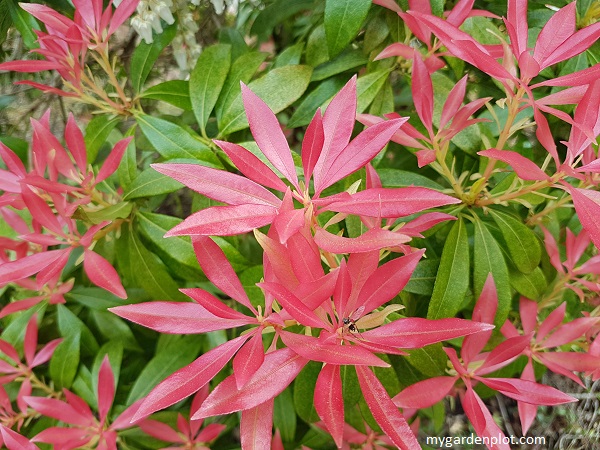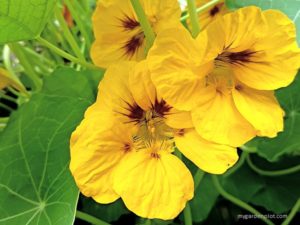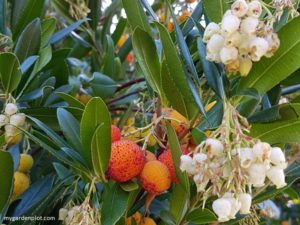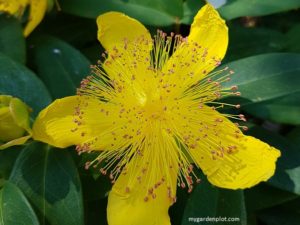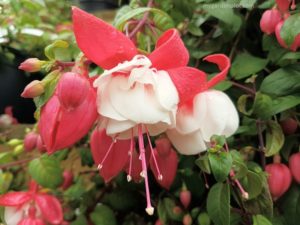About Pieris japonica: Lily-of-the-Valley Shrub, Japanese andromeda, Japanese pieris
The Pieris japonica is a perfect year-round evergreen shrub and a recommended plant for adding interest in a winter garden design. It is also referred to by various names, Lily-of-the-Valley Shrub, Japanese andromeda or Japanese pieris. Besides being an attractive shrub, it is a hardy and low maintenance plant. Pieris is long-lived, adaptable and suitable for container gardening. Below is a pieris shrub guide on where to plant and how to grow this easy-care acid-loving plant.
The Pieris japonica is valued for its colourful new foliage growth that changes as the leaf matures from creamy-white, peach or bright reds to greens with lighter creamy margins. The lightly-fragrant pieris flowers bloom in abundance from late winter and throughout spring. It certainly adds interest to an early spring garden. Native to Japan, East China and Taiwan, the P. japonica is also widely grown in the Pacific Northwest – a region that provides the ideal setting to grow pieris with acidic soil and high rainfall. Pieris shrubs are generally grouped with other acid-loving plants, such rhododendrons or camellias. The pieris shrub can be planted either in a mixed border or it is attractive on its own as a specimen plant. The P. japonica is the parent to most popular pieris hybrids.
IMPORTANT: All parts of the pieris shrub contain a toxic “mad honey” nectar which is poisonous if consumed. Keep children and pets safe.
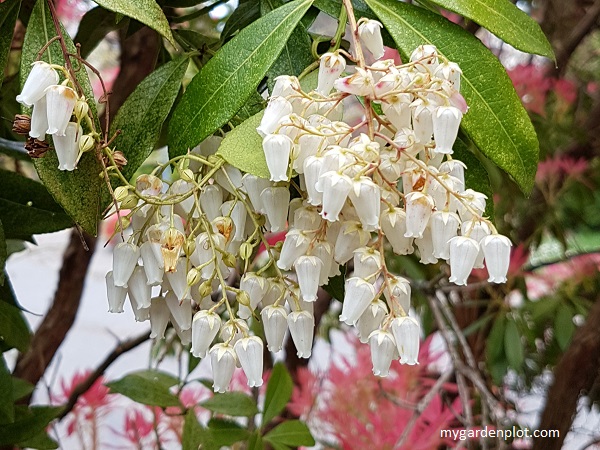
Pieris Shrub Recommendations
One of the most vibrant pieris types is the ‘Forest Flame’, a hybrid of the Pieris formosa ‘Wakehurst’ and the P. japonica. It has stunning new red leaf growth and a profusion of small flowers that hang as clusters. It is a compact shrub that grows to about 3 metres (10 feet) tall.
Other popular pieris cultivars include ‘Valley Fire’ with vivid red new leaves and white flowers – a more disease resistant variety to the similarly impressive P. japonica ‘Mountain Fire’ which is a little more vulnerable to root rot. Or the ‘Katsura’ with deep red new growth – very striking contrast. Another option is the pieris ‘Variegata’ which has white flowers and attractive variegated green foliage edged with white – initially the new leaves are pink-tinted.
Pieris At A Glance
Type: Evergreen Shrub
Location: Partial Shade (can tolerate Full Sun in cooler summer regions)
Seasonal Interest: Flowers – late winter to spring; New Foliage Colour – Spring to early summer
When To Prune: If Required, After Flowering Late Spring / Early Summer (see details below)
Size: Varies from dwarf sizes 90 cm (36 inches) to 3.5 metres (12 feet) tall
Plant Hardiness Zones: 5, 6, 7, 8, 9
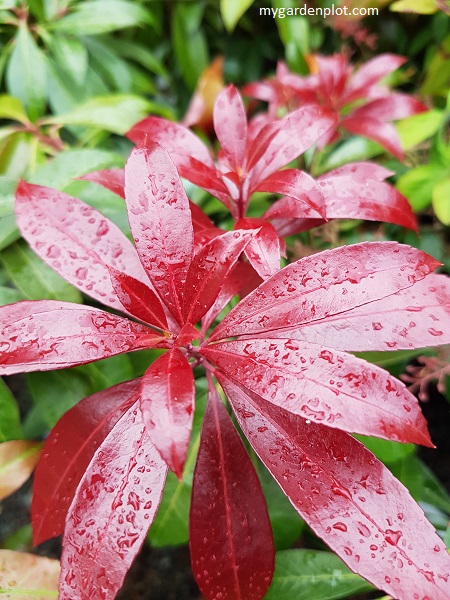
Where To Plant And How To Grow Pieris
Pieris thrive in a partial shade location but can tolerate full sun if protected from the hot afternoon summer sun, or if your region is in zones 5 or 6. Plant your pieris shrub in acidic, rich organic, moist soil with good drainage protected from excessive drying winds. Plant anytime in spring or autumn.
Water regularly the first year. It is moderately drought tolerant once established, but it benefits from being routinely watered during hot weather to reduce stress to the plant.
Your pieris shrub would benefit for an annual light application of slow-release fertilizer formulated for acid-loving plants in the spring.
Pieris is a slow to moderate growing shrub taking over five years to reach mature size – it will only grow five to 10 inches within a growing season. Once planted in the ideal location, your pieris shrub will be very low maintenance.
RELATED TOPIC: Buyer’s Guide On How To Choose Hand Pruners (Secateurs)
Pruning And Deadheading Pieris
The natural compact growth habit of the pieris, means it requires very little pruning. But if necessary, it can tolerate pruning to control or maintain an even shape. Best to prune just after the flowers are spent by late spring or early summer, and before the new growth starts. Remove any awkward stems or damaged branches at any time.
Flower buds form at end of summer, which then bloom late winter and spring the following year. Deadhead spent flowers to encourage healthy new buds.
RELATED TOPIC: Buyer’s Guide On How To Choose A Pruning Saw
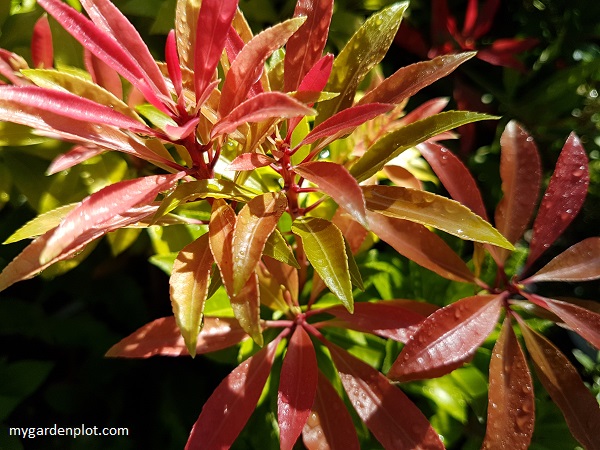
Pests, Diseases And Problems Encountered by Pieris Shrubs
Pieris shrubs are generally trouble-free and deer resistant, but can be affected by root rot, leaf spot or dieback if there is too much wind.

